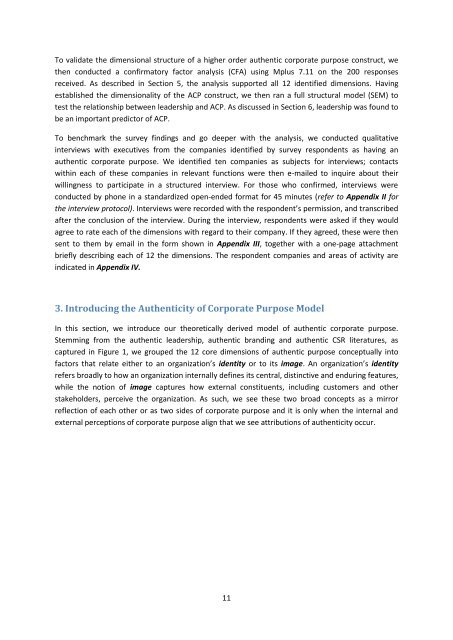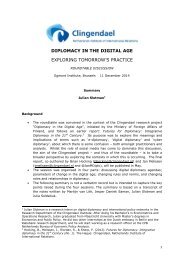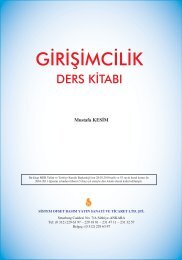BM_IMD_REPORT-How-Authentic-is-your-Corporate-Purpose
BM_IMD_REPORT-How-Authentic-is-your-Corporate-Purpose
BM_IMD_REPORT-How-Authentic-is-your-Corporate-Purpose
You also want an ePaper? Increase the reach of your titles
YUMPU automatically turns print PDFs into web optimized ePapers that Google loves.
To validate the dimensional structure of a higher order authentic corporate purpose construct, we<br />
then conducted a confirmatory factor analys<strong>is</strong> (CFA) using Mplus 7.11 on the 200 responses<br />
received. As described in Section 5, the analys<strong>is</strong> supported all 12 identified dimensions. Having<br />
establ<strong>is</strong>hed the dimensionality of the ACP construct, we then ran a full structural model (SEM) to<br />
test the relationship between leadership and ACP. As d<strong>is</strong>cussed in Section 6, leadership was found to<br />
be an important predictor of ACP.<br />
To benchmark the survey findings and go deeper with the analys<strong>is</strong>, we conducted qualitative<br />
interviews with executives from the companies identified by survey respondents as having an<br />
authentic corporate purpose. We identified ten companies as subjects for interviews; contacts<br />
within each of these companies in relevant functions were then e-mailed to inquire about their<br />
willingness to participate in a structured interview. For those who confirmed, interviews were<br />
conducted by phone in a standardized open-ended format for 45 minutes (refer to Appendix II for<br />
the interview protocol). Interviews were recorded with the respondent’s perm<strong>is</strong>sion, and transcribed<br />
after the conclusion of the interview. During the interview, respondents were asked if they would<br />
agree to rate each of the dimensions with regard to their company. If they agreed, these were then<br />
sent to them by email in the form shown in Appendix III, together with a one-page attachment<br />
briefly describing each of 12 the dimensions. The respondent companies and areas of activity are<br />
indicated in Appendix IV.<br />
3. Introducing the <strong>Authentic</strong>ity of <strong>Corporate</strong> <strong>Purpose</strong> Model<br />
In th<strong>is</strong> section, we introduce our theoretically derived model of authentic corporate purpose.<br />
Stemming from the authentic leadership, authentic branding and authentic CSR literatures, as<br />
captured in Figure 1, we grouped the 12 core dimensions of authentic purpose conceptually into<br />
factors that relate either to an organization’s identity or to its image. An organization’s identity<br />
refers broadly to how an organization internally defines its central, d<strong>is</strong>tinctive and enduring features,<br />
while the notion of image captures how external constituents, including customers and other<br />
stakeholders, perceive the organization. As such, we see these two broad concepts as a mirror<br />
reflection of each other or as two sides of corporate purpose and it <strong>is</strong> only when the internal and<br />
external perceptions of corporate purpose align that we see attributions of authenticity occur.<br />
11








